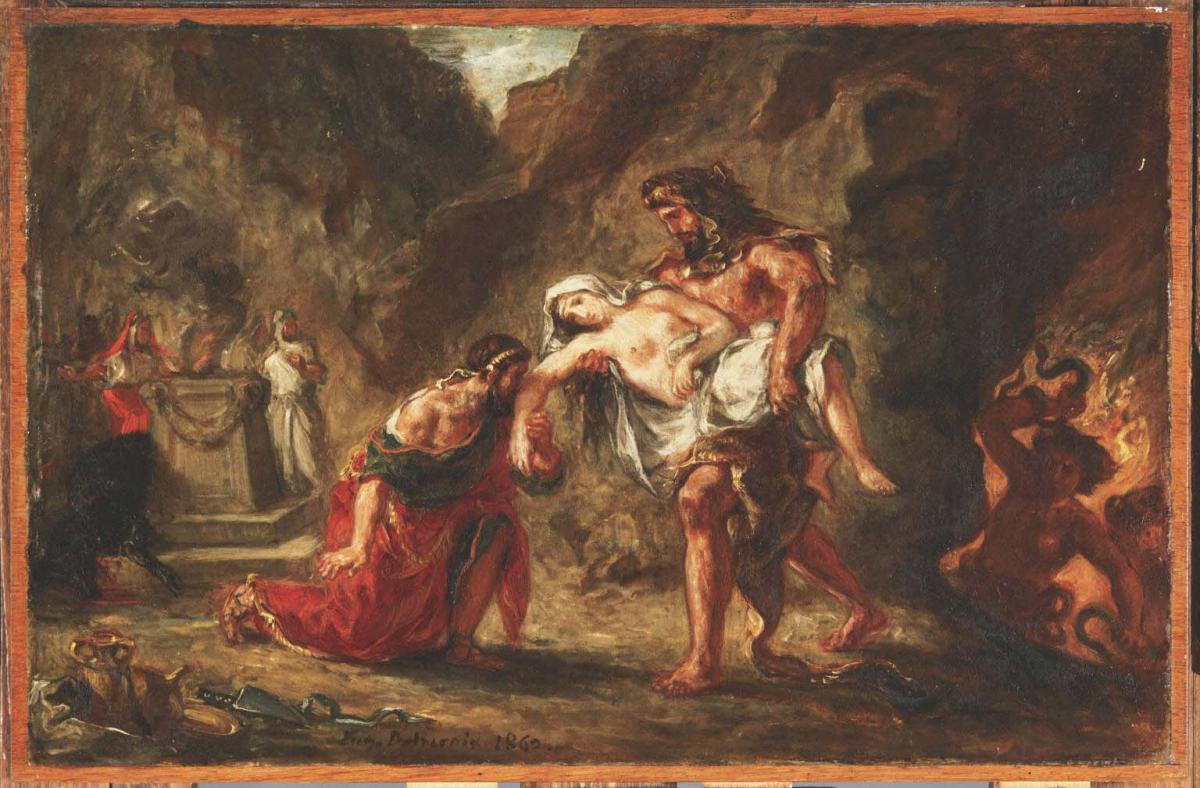Hercules and Alcestis
Ferdinand-Victor-Eugène Delacroix ( 1862 )

Delacroix’s Hercules and Alcestis is based on a tragedy by Euripides that recounts the legend of the queen of Pherae who consented to die so that her aged husband Admetus would be granted longer life. Impressed by the compassionate sacrifice and piety of Alcestis, Hercules rescued her from Hades and returned her to earth. Delacroix’s painting captures the climactic conclusion of the episode: Hercules valiantly strides out of the mouth of the underworld and presents the languid body of the queen to her king, who welcomes her on bended knee.
Delacroix first treated this theme in the 1850s when he was commissioned to decorate the Salon de la Paix in the Hôtel de Ville, Paris. Although the building was destroyed by fire in May 1871, Delacroix’s paintings – including the eleven tympanum-shaped lunettes with themes based on the exploits of Hercules – are known from engravings. The Phillips painting is compositionally similar to its prototype but includes the following additional motifs: in the left background, priests have sacrificed a black sheep on a festooned altar; the left foreground incorporates a still life with amphora, trowel, pitcher, and paten; and the right side of the painting is framed by two fiendish figures peering out from the underworld. Yet more significant than the addition of these auxiliary narrative elements is a subtle transformation that intensifies the sentimental aspects of the drama in the Phillips painting: Admetus no longer gratefully gazes at Hercules but instead tenderly kisses the arm of his beloved queen.
Hercules and Alcestis is the second Delacroix painting acquired by Duncan Phillips, and it was purchased at a time when he was especially interested in the French masters. Earlier in his collecting career, Phillips had asserted that Delacroix’s paintings were “too literary…too dependent upon subject for inspiration, like the novels of Scott and the poems of Byron.” While Hercules and Alcestis is clearly the most “literary” of the three Delacroix paintings in the Collection, Phillips was undoubtedly drawn to its dramatic color and energetic composition – attributes synonymous with Delacroix’s entire oeuvre. He maintained that Delacroix was “a gallant fighter” for “a state of mind open to new aesthetic ideas” and that he was responsible for resurrecting “the color design and individual expression inherent in the Old Masters.”